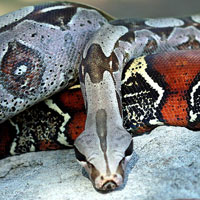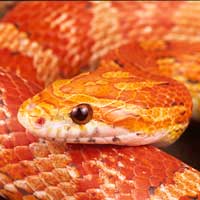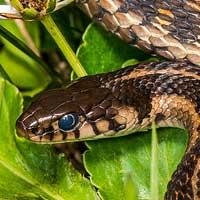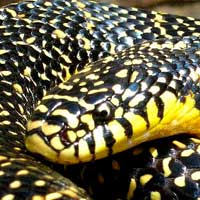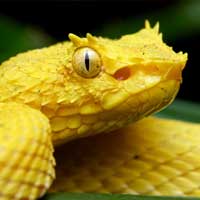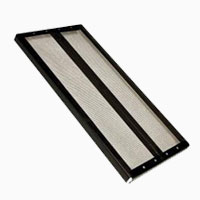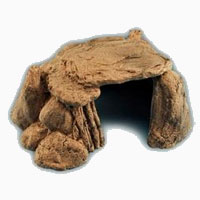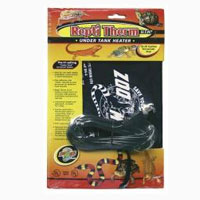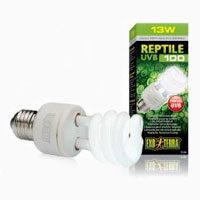Common Boa
Scientific Name: Boa Constrictor Imperator
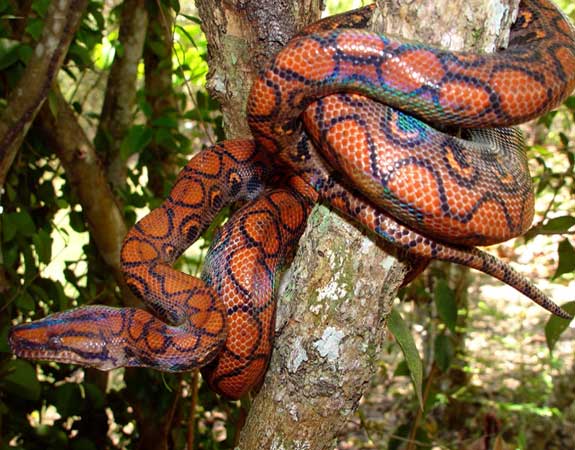
Share this Post
The boa constrictor is a non-venomous snake that belongs to the family Boidae, which includes seven genera of boas, four genera of sand boas, and eight genera of pythons. Its scientific name is Boa constrictor imperator. Common Boas have thick-bodies. They can grow to three to fourteen feet, which is roughly 9 to 4.3 meters long, and an adult Common Boa can weigh over 100 pounds (45 kg). Most of the adult Common Boas are 5-8 feet (1.5-2.4 m) long and weigh below 60 pounds (27 kg). They Common Boas have oval, bat-shaped and diamond patterns of a reddish-brown outline with some black on a cream background of pale tan or grey. œRed-tailed boas? are different due to the color variation found in both the Boa constrictor and the imperator subspecies. Common Boas have short tails and they are able to grip branches firmly. They have numerous small teeth for gripping their prey, but they do not have fangs. Boas have spurs around the opening of the cloacae.
Common Boas Are Beautiful Creatures
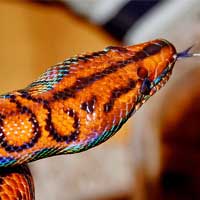
Facts About Brazilian Common Boas
Geographic Location
Boa constrictors are found around the ranges and in most of Central and South America. They are also found in Mexico and Argentina. Other parts include the Lesser Antilles and other islands.
Habitat
Boa constrictors live in the wild on the inland at a sea level of 3,300 feet (1,000 m). They live in tropical rainforests, rocky hillsides, semi-deserts, savannas, cultivated fields and near homes. They are good tree climbers and those in forests spend most of their time on trees. Although boa constrictors swim most, do not spend much time in water. During winter, where there are boas in cooler regions, they hibernate partially.
Behavior
Common Boas feed a variety of prey, which includes birds, lizards, rodents, monkeys and wild pigs. The Common Boa kills its prey by constriction and subsequent suffocation.
Reproduction
The Common Boa reaches sexual maturity at 3 – 4 years. Common Boas are ovoviviparous thus, the female retains her eggs internally until they hatch and she bears live young. Mostly there are between 20 and 50 hatchlings, which are from thin-membrane eggs. The highest ever number of hatchlings was 77, in Quebec at a zoo. Neonates are born after duration of between 100 to 150 days. Females are capable of storing sperm for a considerable time before fertilization. This makes the whole gestation period to be a total of 10 months. The female usually eats very little food or nothing while she is at the stage of retaining eggs (called gravid in reptiles). Boa constrictors are usually 17-20 inches (43-51 cm) long at birth. They grow to 3 feet (9 m) in a few months.
Captivity
Common Boas average 20 years or more in captivity. At the Philadelphia Zoological Park one lived 40 years. In a cage, a male Common Boa courts a female for a maximum of five weeks before copulating. Courting consists of the male winding over the female and stimulating her cloacae with his spurs. They copulate when the cage is cold mostly in the rainy season. The snake is very easy to breed and keep because it is domesticated with frequent handling. It requires moderately high humidity and when handling the large ones, have at least more than one person present. A healthy Colombian Rainbow Boa lives to more than 25 years in captivity. The right captive environment should contain a sufficient basking area coupled by a cool area. Supply numerous climbing areas like logs, branches and rocks.

